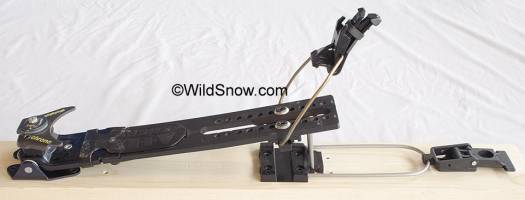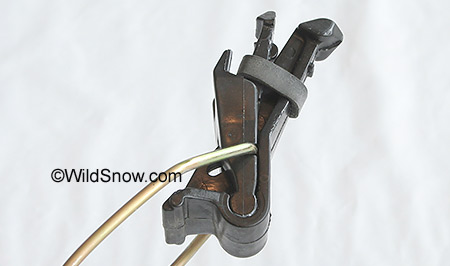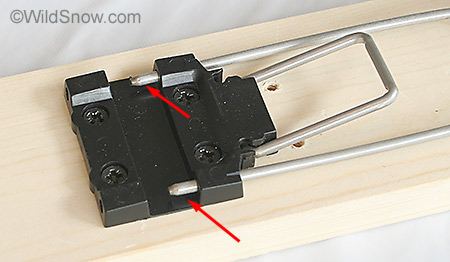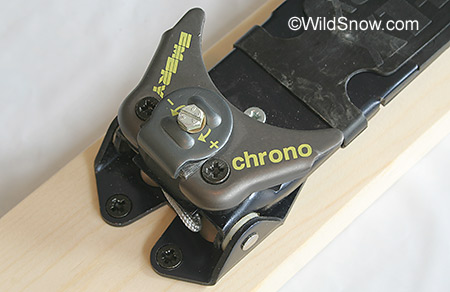As early Dynafits came on the scene, other binding makers attempted to enter the lightweight game. Fact of the matter: when skiers buy touring bindings the scale rules. In 1991 the Emery Chrono ski binding was a contender in the weight game, and somewhat popular among the fanatic light-and-fast crowd. While basically a plate (frame) binding, the Chrono had one incredibly innovative feature: A vertical heel release that was built into the heel clamp lever, with spring tension provided by rubber bands. Check it out.

Complete Emery Chrono binding shown above. Binding is in tour mode with climbing lift in up position.

Heel clamp shown above. Note black rubber band that provides safety release tension for backcountry skiing. You add rubber bands to increase release tension. I doubt anyone has ever invented a ski binding vertical release mechanism this light.

To change between touring and downhill with latched heel, these pins slide in and out of holes in the bottom of the binding plate. The same system is used on Emery’s other model binding from the same period. Video below shows how it works.

This backcountry skiing binding’s toe jaw couldn’t be simpler — just an aluminum wing that you raise and lower using shims.
Plus-minus adjustment shown at top is for side release tension that uses an ingenious combination of ramp and vertical compression spring. When the jaw rotates, it climbs up a ramp and thus meets resistance from the spring, creating release tension. While not ideal in terms of elasticity and friction, this weighs a fraction of most other toe-wing style release systems.
In all, we’re still amazed that a plate frame binding could be made this light in weight. While probably not suitable for high energy extreme skiing, the Chrono no doubt stood steed for many excellent tours in the early 1990s.
Weight (one binding with screws and adapter): 17.2 oz, 488 gr
Thanks goes to David Erskine for donating these bindings to the WildSnow collection.

Emery Chrono thumbnail.
